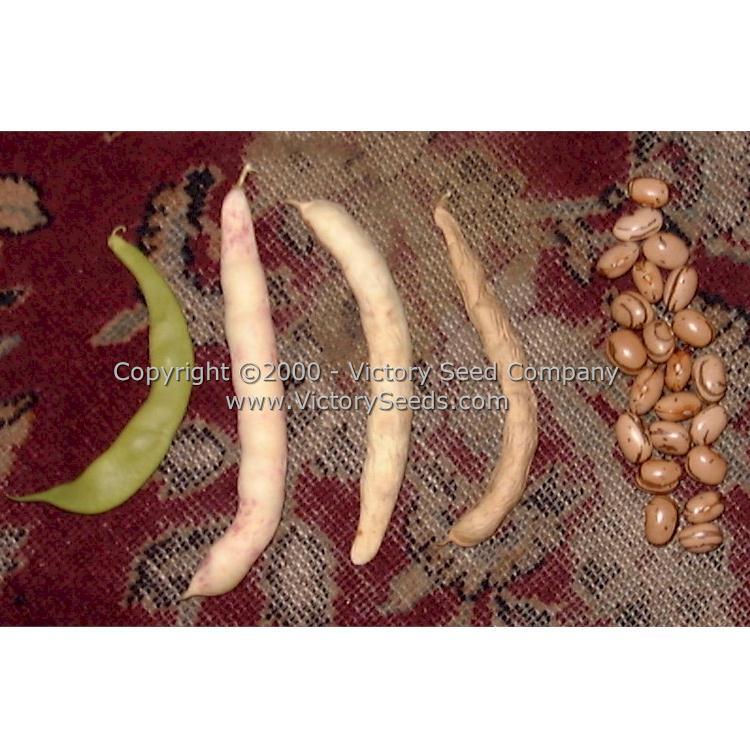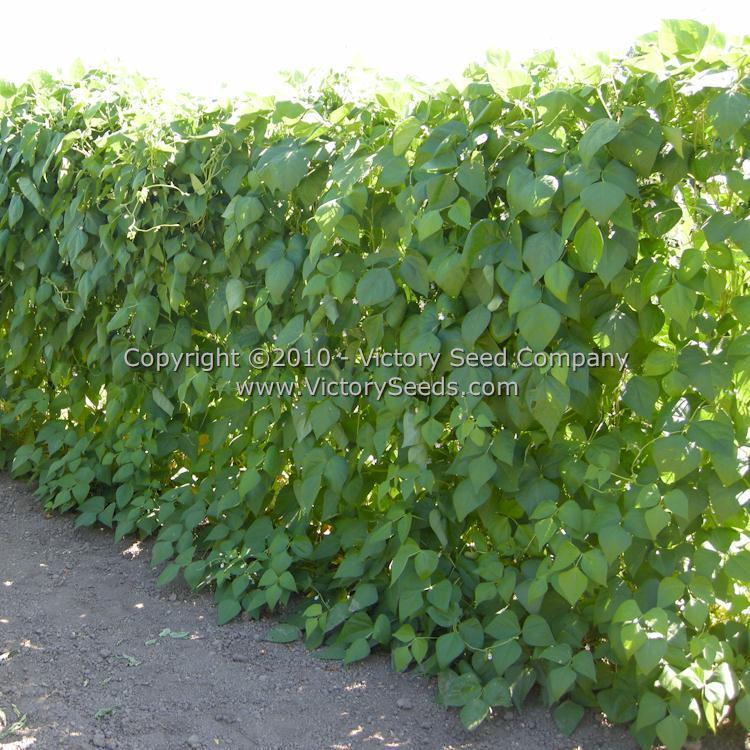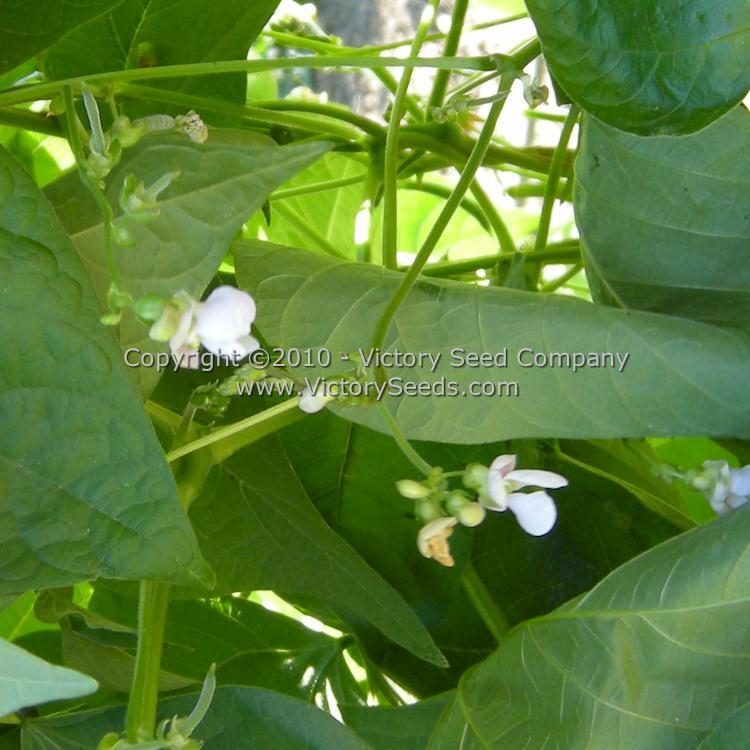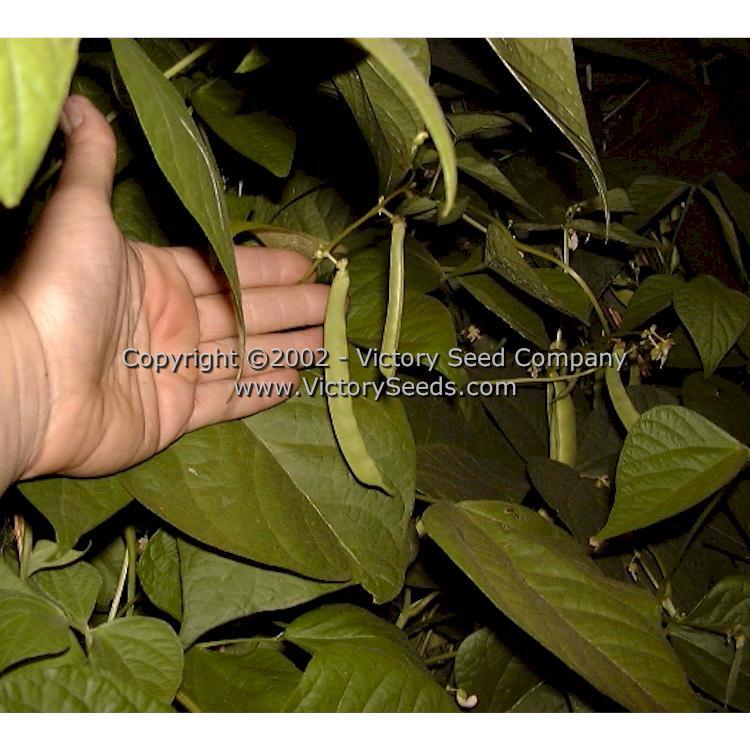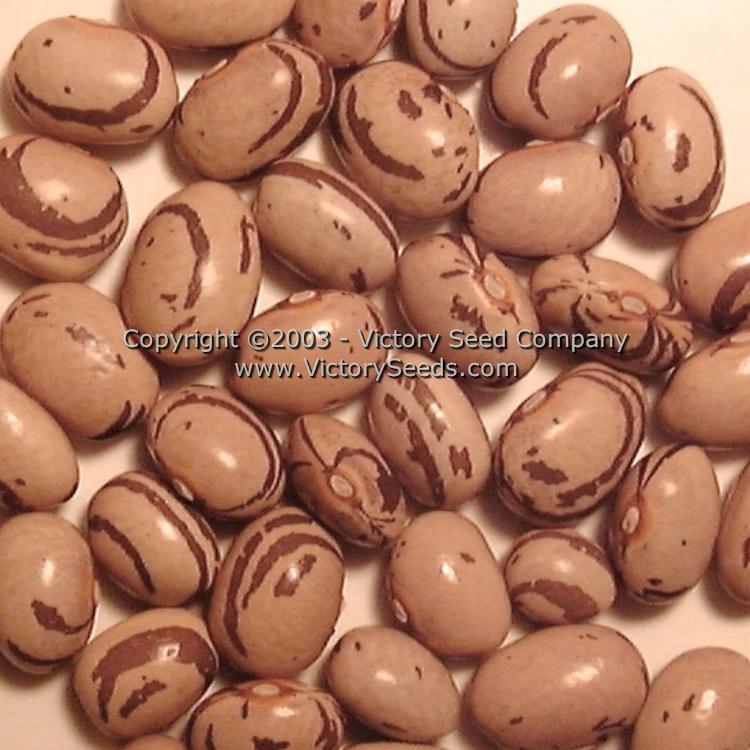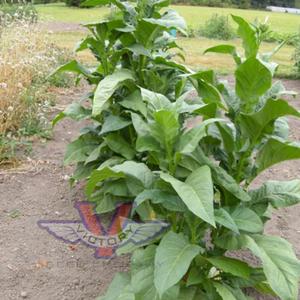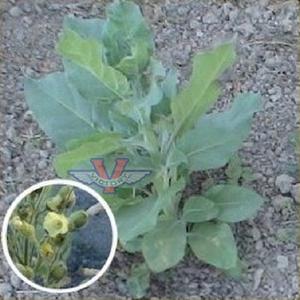





Valena Italian Pole Green Garden Bean
Price: $2.95
SKU: 3030101
This bean is one of a handful of family heirlooms that helped us start the Victory Seed Company. It was handed down to us years ago by Denise's maternal Grandfather, Emilio Valena of Sonoma County, California. He was a first generation Italian-American whose relatives in Cino (Lombardy Region) Italy still grow this variety. Our family had grown this bean for years prior to us sharing it with the gardening public in our first annual seed catalog.
75 to 90 days — 'Valena' is a multi-purpose (horticultural-type) pole bean that is used young as a green bean, at the green shelling stage, and mature as a dry bean. The pods are flat, green and tasty when young turning tan with maroon streaks as they mature. The seeds are large, egg-shaped and tan with darker brown streaks.
The vines need good, tall, strong support as they are very vigorous and very productive. This means they get really heavy towards September! In fertile soil, we have had them quickly top our six foot tall trellis system and double back down about half way. For a lot more information on pole bean support systems, click here. Each packet contains one ounce, which is about 35 seeds.
Don’t bother trying to get an early start with beans – you’ll waste a lot of seed! Beans are a tender vegetable and you should not plant them until all danger of frost has passed and the soil remains above 65ºF. Sow seeds 1½ inches deep, every two to three inches. As they make efficient use of vertical space, provide a trellis. Use string or twine as wire will heat and burn the tender vines.
Pick the pods while young as they are more tender and succulent and less likely to be stringy. For seed saving, allow the pods to fully mature and dry completely out on the vines.
We heard from a gardening friend in Canada about a variety called 'Kahnewake' bean whose seeds appear similar although the vines are reportedly shorter. The undocumented lore is that it arrived in "la Nouvelle-France" (New France) with the Jesuits. In trying to research that variety, its history is a bit elusive and the original source traced back to the Eastern Native Seed Conservancy (closed in 2007).
In the 1931 publication called, "Beans of New York," a comprehensive and well researched catalog of all known bean varieties, a variety called simply 'Italian' is described and a picture of its seed is included. Although the seed looks similar, it is said to only grow to 4-1/2 feet tall.
Customer Reviews:
By Kay (Portland Oregon) on February 24, 2024
I'm happy to see these in your catalog because I've searched for years to see them listed anywhere. My friends gave me a handful in 1979 in Pennsylvania and said that an old man had given the seed to them, that they were an Italian Romano pole bean. So I've always labeled them Old Man Romano. I've been gardening for over 50 years, now retiring, and gardening organically for probably over 40. I always save some for seed, and have shared pounds of these with many people. To me, they're a magical bean. I've grown them in many different places too. They don't ask for much except good support or they'll overwhelm it. One little 3 foot row feeds me for months, and I eat them daily when they're on. Best flavor, best producer, EVER! And I do love a few others, but this one? No competition. If I can continue to grow anything, it'll be my Old Man Romanos. Grow this bean, save your seed and keep this valuable food growing!
By Paula Beach on January 13, 2016
This is a classic Italian bean. It started to pod a few weeks earlier than Blue Lake in my garden. I use it primarily for pickling because the thin profile pickles quickly. They can get mealy and fall apart if cooked too long, so I use a raw-pack method. These beans can get huge if left on the vine. I pick them when they are about a half-inch wide. The vines can reach eight feet easily and are very leafy, so it can be hard to find all the beans. Luckily, a few overripe beans don't seem to slow the harvest any.
By Amy Glass on January 12, 2016
These started slow, mostly because I didn't give them enough water at the start, and because they were a little shaded. Once they got regular, deep, waterings the vines shot up and were filled with lots of beans. I did not eat the beans dry, just green, and they were some of the best I've ever tasted!
By kenneth adams on February 5, 2014
These grew very well in nw indiana in 2013. Huge bean, great flavor very prolific. I saved seed last year but am ordering more for a large trellis
